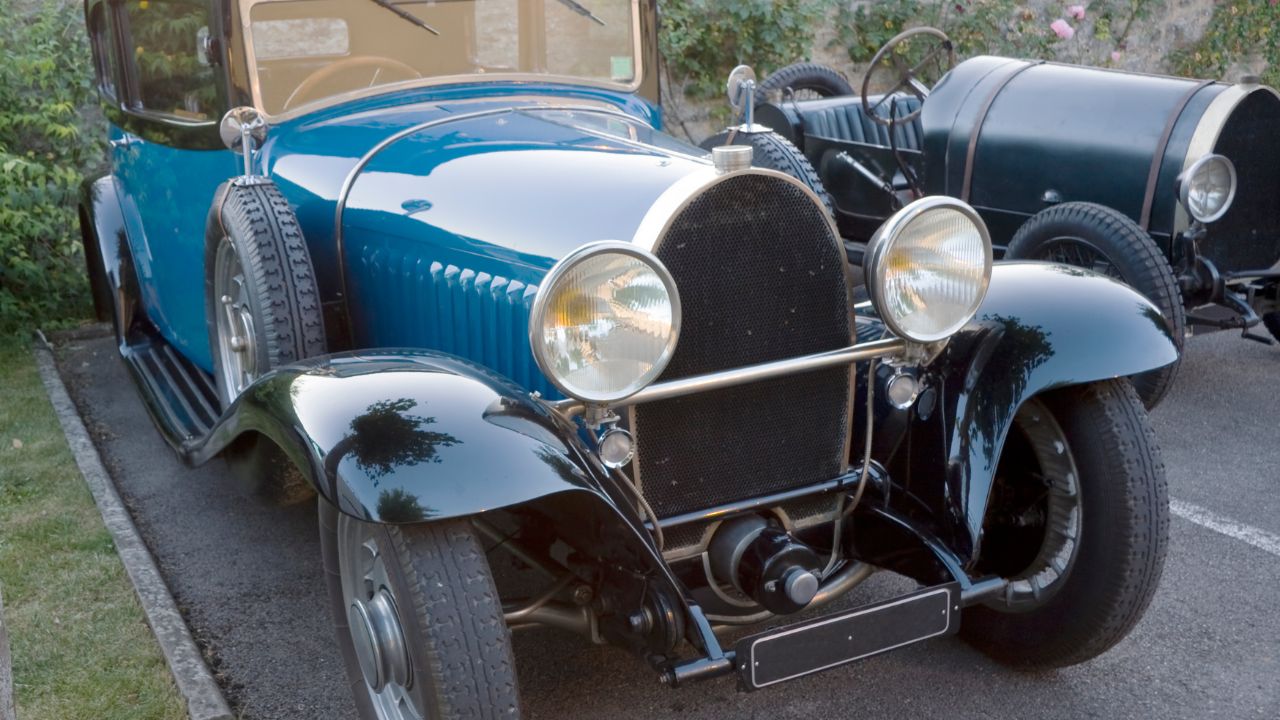
When it comes to horsepower, the 2012 Dodge Charger is a hefty contender. The Hemi V8 of the 2012 Dodge Charger is just as powerful as its street-legal predecessors but is much more refined and civilized. It has a displacement engine of 5.7liters or 345 cubic inches. The car also has a 120.2-inch base and a length measuring 199.9inches.
Standard 292-horsepower Pentastar V6
The Dodge Charger sedan is a five seater that has all the characteristics of a muscle car and is loaded with options. Its standard engine is a 3.6L Pentastar V6 producing 292 horsepower and 260 pound-feet of torque. It achieves 31 mpg highway with its eight-speed automatic transmission. The Dodge Charger is also very efficient, thanks to its fuel-saving mechanism, which deactivates four cylinders when there is no load.
The Charger's 3.6-liter Pentastar V6 engine is paired with an eight-speed TorqueFlite automatic transmission for a refined, smooth drive. The standard power output of the car is sufficient to take it from zero to sixty mph within 6.5 seconds. It can also reach a top speed in excess of 154 mph within five seconds. The Dodge Charger's standard Pentastar V6 is 292-horsepower, which is a 62 per cent increase on the base 2.7-liter model.

SRT8's 395-horsepower Pentastar V6
Dodge Charger, a full-size sedan, offers three powerful engines. The base 3.6-liter Pentastar V6 produces 275 horsepower with 260 pound-feet torque and the 5.7-liter HEMI V8 generates 395 horsepower with 395 lbft. Supercharged versions produce 410 horsepower with 450 lbft. All Chargers are equipped with standard all-wheel drives, but only the SRT8 has an AWD system.
The Dodge Charger SRT8's engine was first introduced in 2005, and later became the basis for the Corvette Super Bee. The SRT8 Charger is an extreme version, but it doesn’t have a V8 at the heart of its engine bay. This is a shame as the Charger SRT8 is a powerful car that can easily compete with Corvettes in straight lines.
R/T Road & Track's 460-horsepower Pentastar V6
The 2012 Dodge Charger will be available in SE and SXT trim levels. The two most powerful engines in the Dodge Charger are the 3.6L Pentastar V6 or the 5.7L HEMI V8. Dodge's 3.6L Pentastar V6 V6 produces 292 horsepower, and 260 lb.ft torque. Both engines are efficient. Pentastar V6 is capable of producing 31 highway mpg.
The Dodge Charger, which was produced between 1966 and 1978, was retired in 1983. The car was also available in a second edition until 1987. Then, it was mothballed for two years before being revived in 2006. The second generation Charger is now available with the Pentastar V6 engine from R/T Road & Track. The Charger's R/T Road & Track 2012 model has been completely redesigned.

R/T Max's 480-horsepower Pentastar V6
Dodge introduced an eight speed automatic transmission for its Dodge Charger in 2012. This increased both performance as well as highway fuel economy. This model came standard with Beats by Dr. Dre music system and improved navigation. What's the best thing about the Charger? Here are some of the top reasons. This vehicle is the perfect match for a family.
Redesigned exterior and interior of the Dodge Charger have been updated to give it an updated look. The base model includes the Chrysler Pentastar V-6 which generates 292 horsepower. HEMI-powered models were also upgraded, and the top SRT8 model received a 6.4-liter Pentastar V8 with 470 horsepower. The car now has WiFi and a Garmin GPS system. There were also driver assistance systems, such as active cruise control and blind-spot monitor.
FAQ
What length is an automotive mechanic apprenticeship?
A three-year apprenticeship in automotive mechanics takes. It includes two years of school and two years as an apprentice. The first year is used to learn all aspects of the trade including safety procedures and theory. You'll also learn how tools can be used safely and efficiently during this year. You'll spend the second year in on-the-job training, where you will gain experience in various trades. You'll have the opportunity to attend formal courses during these periods too.
The final year of the program is spent gaining qualifications and becoming certified in the field. These include NVQs, which are obtained after passing industry-specific exams. You can also get HNCs (Higher National Certificates), that cover subjects such as customer service, business administration, management, and business administration. For those interested in pursuing certain trades, City & Guilds certificates are available.
What are the requirements of an auto technician?
You need to have high school diploma or GED and good grades in English as well as maths. You must also be able to read, and write. To be allowed to work, you must pass a written and practical test.
Is it hard being a mechanic apprentice
It's not simple, but you can learn quickly and there are many avenues for advancement.
You must be patient and persistent. It is also important to know how you can fix vehicles, trucks, or motorcycles.
Customers and family members can put a lot pressure on you. They want you to succeed. But, you shouldn’t be pressured to make any decisions you aren’t happy with.
If you enjoy fixing cars, it could be a great career choice. It's a job where you can earn a decent salary and build up your business.
However, you might prefer to go down another route. This is where you might be interested in becoming a technician.
This requires you to use your technical expertise in support of other workers. This could be a way to help technicians with their problems or to teach them new techniques.
Another option is to be a service advisor. As a service advisor, you will provide assistance and advice to customers as they bring their car to a garage.
It all depends on your goals. There are plenty of options available, and you can choose which suits you best.
Is it hard to get work as an auto mechanic?
Yes, it's possible. Many garages advertise their vacancies online, and many people apply just because they think it might be fun. Try applying to a few jobs and seeing if the garages accept student applications. Alternatively, you could ask friends and family if they know anyone who works in the industry. They might be happy to recommend someone.
To work as an automotive mechanic, do I need a degree? Can I study part-time?
It is not essential, but it is helpful. Employers will prefer candidates who have completed a degree. It shows that you've put the effort in and have done everything possible to succeed.
It doesn't mean that you can't work while you study. Many universities permit students to take courses during the summer holidays, and then finish their studies in the fall. Others allow students to study part-time all year.
Statistics
- There were 749,900 jobs available for automotive service technicians and mechanics in 2016, which is expected to grow by six percent through 2026. (jobhero.com)
- The U.S. Bureau of Labor Statistics (BLS) reports that the job outlook for automotive service technicians and mechanics is expected to decline by 4% from 2019 to 2029. (indeed.com)
- According to the BLS, total auto technician employment is expected to exceed 705,000 by 2030. (uti.edu)
External Links
How To
How to diagnose your vehicle properly for repair
You should first examine the symptoms your car is showing to determine if it requires repairs. Follow these steps to properly diagnose your vehicle.
-
Check engine lights. Make sure to check all dashboard indicators like the engine light indicator (oil pressure gauge), the battery indicator (battery light indicator), and the RPM indicator (rpm gauge). It could indicate that your vehicle is having problems.
-
Examine the treads of the tires. If the tires are worn out, they could cause problems with handling and braking. The treads of the wheels should be inspected as well. They should be clean, and they should be smooth. It is best to take off the wheels and remove them. To check the condition of your treads, use a flashlight.
-
Monitor the level and consistency of your brake fluid. You must always monitor the level of your brake fluid. This will ensure that your brakes run smoothly. Low brake fluid levels could cause your brakes to fail when you apply pressure.
-
Make sure to test the suspension system. Vehicles usually have a suspension system that helps absorb shocks and vibrations while driving. This suspension system provides greater control and smoother acceleration and deceleration. It might feel uncontrollable or wobbly if your vehicle is suffering from a suspension problem. Try putting some weight on your front or rear axle to determine if you have a suspension problem.
-
Examine the steering column. The steering column connects the steering wheel to all other components of the vehicle. Sometimes, steering columns are damaged by accidents. You should replace your steering column if it feels loose or unstable.
-
Observe the exhaust pipes. Exhaust pipes move gases from combustion chamber to atmosphere. If the exhaust pipe is damaged or leaks, harmful fumes can enter your cabin. Additionally, your tailpipe should be fixed immediately if it is bent.
-
Look under your hood. Take a look underneath the hood to find any strange or unusual items. Leakage of fluids in your engine could indicate that it is leaking. In addition, if you notice an unusual smell coming from your engine compartment, you should contact a professional technician.
-
Check the air filter. The outside environment can collect dust and other debris in your vehicle's air filters. A dirty filter can lead to a poor vehicle's performance. Replace your air filter regularly.
-
Check the fan belt. Your vehicle's fan belt connects the engine to the transmission. If the fan belt fails, the engine won't start. It is very easy to replace your belt. You will need a screwdriver, pliers and a pair of pliers.
-
Verify the radiator hoses. The radiator hose is used to carry water from the radiator to your engine. If it becomes cracked or damaged, it can leak hot liquid onto the engine. Repairing the hose is easy with a pair of needlenose pliers or a small wire brush.
-
You should inspect the windshield wipers. Windshield wipers use electricity to remove snow and rain. If they stop working, streaks could be left on your glass. The solution is to change the washer fluid.
-
The battery cables should be checked. The batteries provide power to the electrical systems within your car. When you replace batteries, make sure to disconnect the negative cable first. Failure to do so can damage your alternator.
-
Be sure to check your headlights. Headlights are used to illuminate the road ahead. They can make it difficult to see if they stop working. To determine if your bulbs are out of date, check them.
-
Make sure you have your lights on. You can warn other drivers if you approach them at night. You could be distracted and cause an accident if one does not work.
-
Check the brakes. Before you get in a car accident, your brakes will be slowing down your vehicle. If the brakes fail to work correctly, your car could lose control and collide with another vehicle.
-
Change the oil. The oil keeps your engine well lubricated. It helps keep metal parts from getting too worn down. It is recommended that the oil be changed every other month.